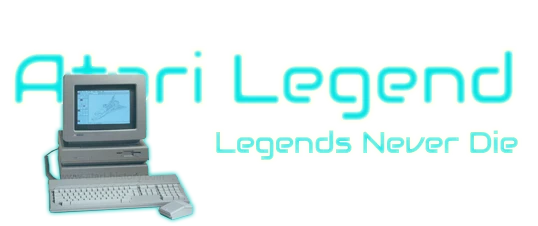

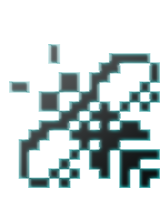





About 2 years ago, while I was busy working on this new version of Atari Legend, Alan Garrison Tomkins all of a sudden became a member of the Atari ST group on Facebook. I had never heard of him before, but the amount of historical info he was sharing regarding the ST game scene, was simply staggering. Alan was a pixelartist at the peak of the 16bit era and has worked for Probe, Mirrorsoft and later on for Eidos (working on the first model of Tomb Raider's Lara Croft!) and other companies. At that moment I knew I had to do something with all of this and I asked him if he would be up for an interview when the new site would be ready. Little did I know that would take another 2 years. Finally this month I contacted Alan again and here we have the result. If you wonder what life was like as an 80’s pixelartist, please read on…
There is currently no profile available in our database
1) Introduction - Not just any petrolhead
2) In the beginning ...
3) First hardware
4) Silica Shop
5) The good 'ol 80's
6) Games games games
7) Even more games
8) Rockstars...or not
9) ST memories
10) Converting graphics
11) Recognition
12) Don't mention the A-word
13) It's me your Kathy
14) Greatest accomplishment
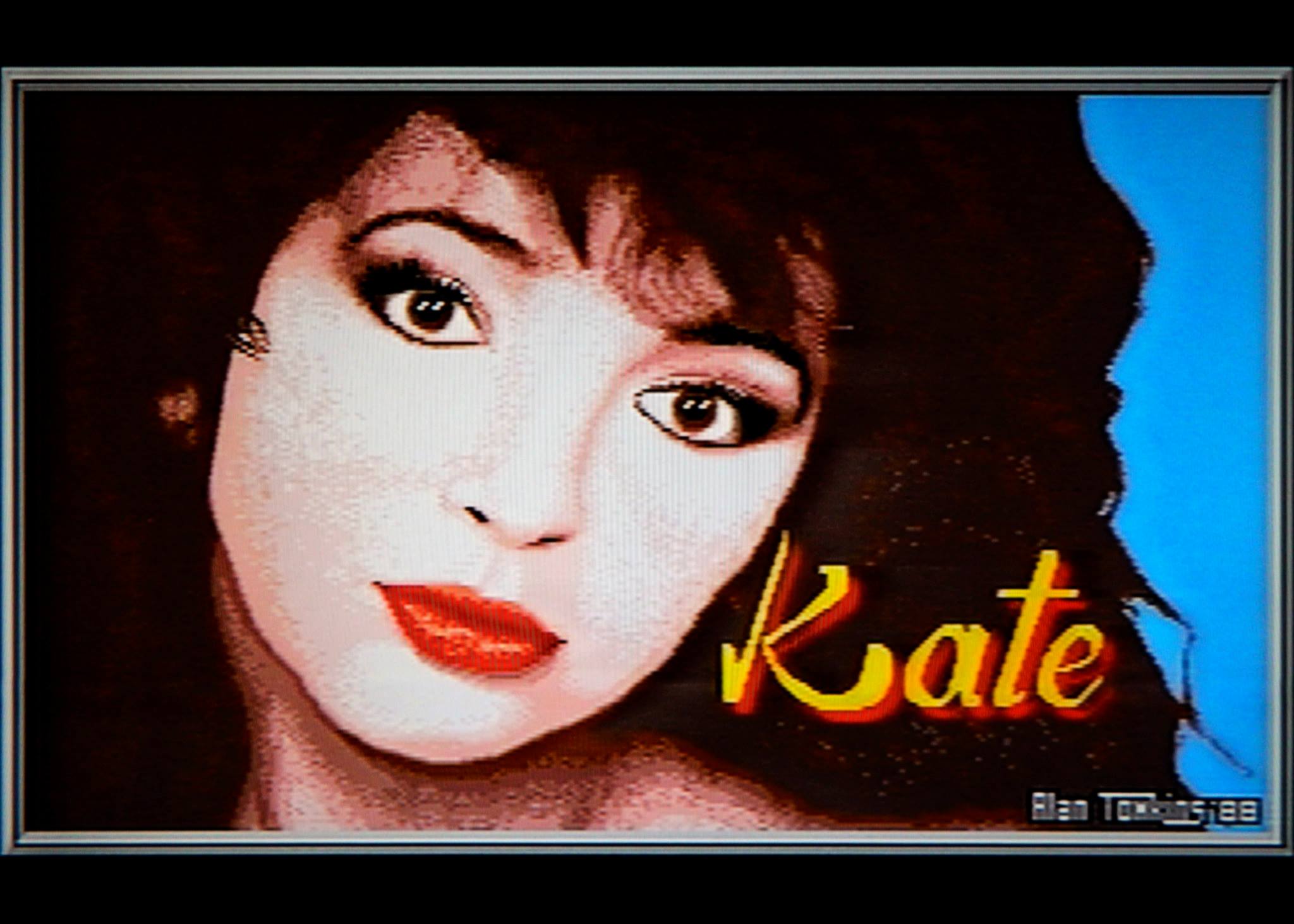
The screen that started it all back in 1988, displayed at Sillica Shop, in London's Selfridges, I was asked to do the graphics for my first game, 'Foundation's Waste'. From that 'Paperboy' followed, and I've now done over 50 games.
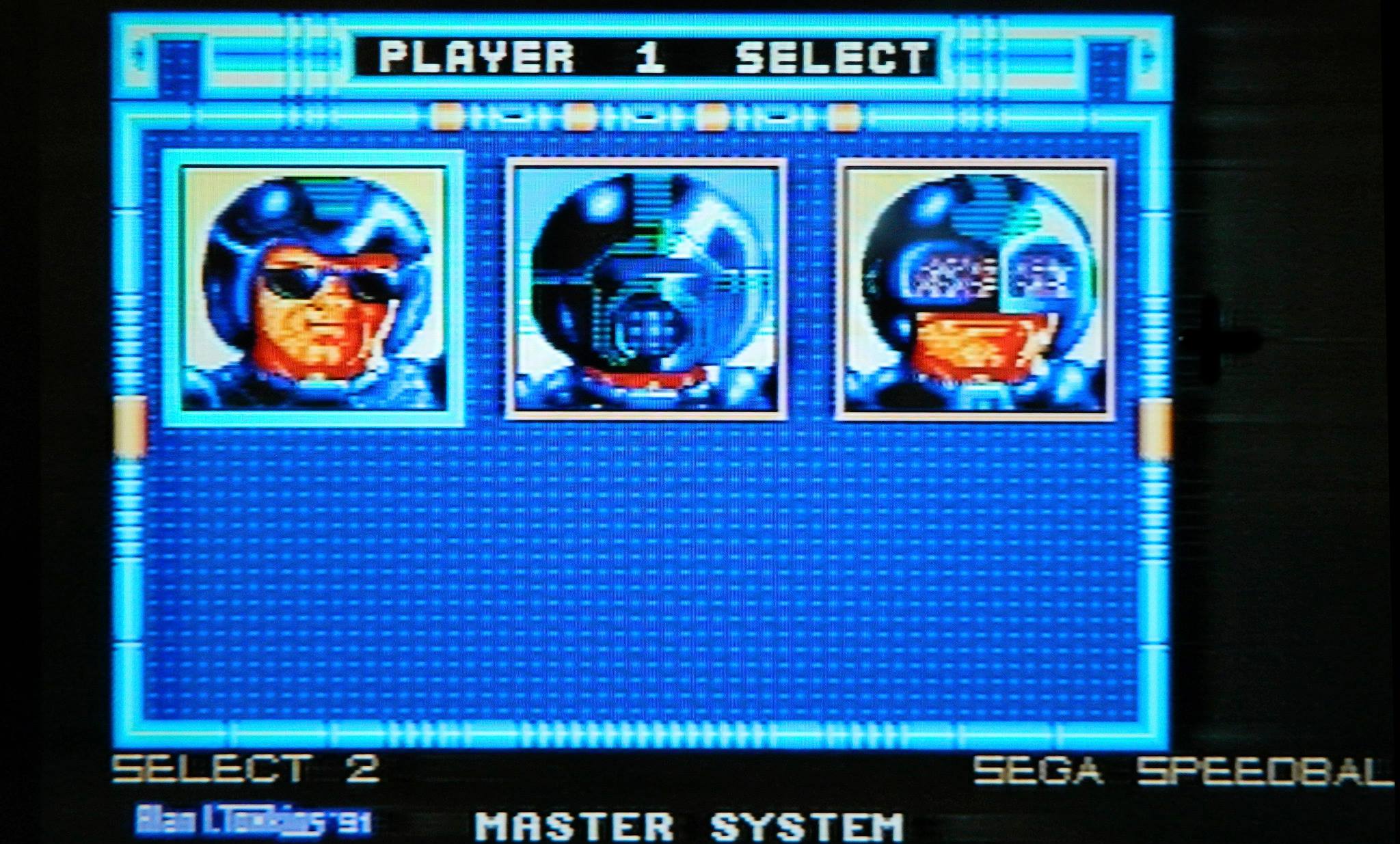
Alan did the Sega Mastersystem conversions of 'Xenon 2' and 'Speedball' (of which we see a shot over here)
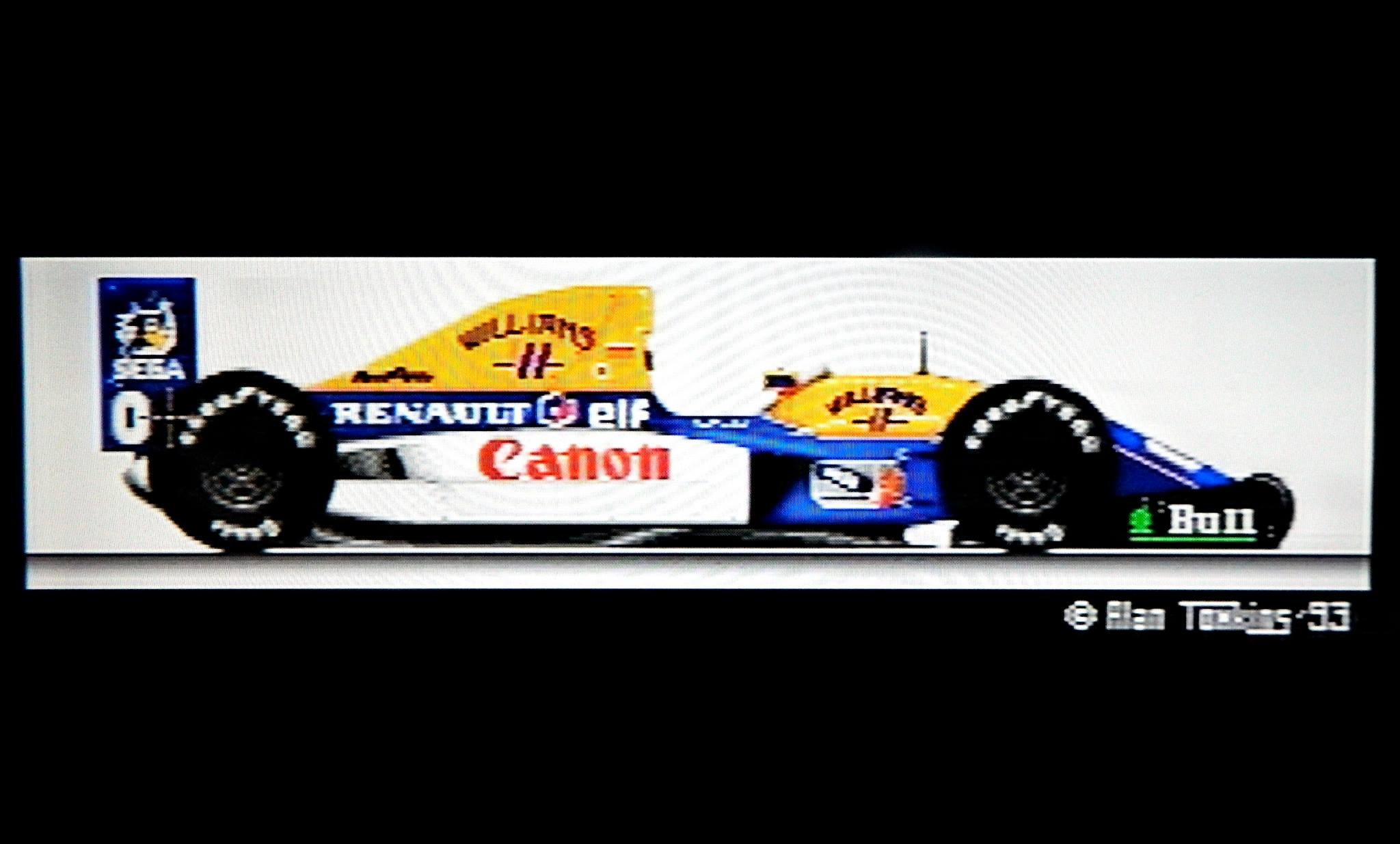
The Williams F1 car of 1993, drawn by hand for the Marlboro GP game. This game was part of Marlboro's Grand Prix promotion.
1) Hello Alan, let’s start with the most important thing! ;-) I read in an interview in ‘Zero’ magazine that you were very much into cars? Is that still the case? What keeps you busy these days?
Well, the first car I bought was a 1959 Chevy Impala Rag Top, back in 1964; I was a club DJ back then, so earned more than a normal weeks wage. It was a bit of a boat on London streets, but it’s still my favorite car. Next was a 1961 Pontiac Parisian also a rag top, it became hard work driving in London as more cars were using the roads, so I downsized to a Mini and put a 1300 Cooper engine in it, with a Routes supercharger. Late at night when driving through London, I always got stopped by the police, who always wanted to see what was under the bonnet, as the supercharger stuck up through it.
Then around 1974 I bought a black Mach 1 fastback Mustang. After that it was a white P6 3.8 Rover (the same car as the police), great car. Then I moved to California, and bought a Ferrari Mondial ragtop, I’ve supported Ferrari ever since Hike Hawthorn drove for them in Grand Prix races back in 1958; so always wanted one. No power steering, the 2nd gear was impossible to shift to, so I sold it within 6 weeks. Then came the Chrysler LeBarron, 1988 concept car, also a rag top, and this was the best car for comfort and performance I’ve ever owned. Then a late model Delorean, with the Buick block, and a 1982 special edition Chevy Stingray.
I haven’t owned a car since moving back to London, as the roads and the standard of driving is bloody mental these days, and is no joy anymore. But I hire a Mercedes E-Class Coupe if I want to go out of London. As for hobbies, I have a recording studio that whiles away my time as I’m now retired. My fav genres are Tropical House, and Orchestral soundtrack music. I still go to Chelsea, who I’ve supported ever since 1951.
2) How did you start in the business as a graphics artist? How did you get noted by companies?
At first there weren’t many art packages for the ST, I kept going back into Silica Shop on Oxford street, and asking if any new ones had come out, then one day the two guys in there showed me DEGAS which had just come out. They asked why I kept asking for art packages, so I told them I do art in my spare time. They told me to bring some of the stuff I'd done in to show them. And they put it on a rolling display in the shop. Then asked if I would do the graphics for a game they were programming. Not knowing a thing about games, they said they'd show me how big they wanted stuff, so I said yeah, and Foundation's Waste became my first computer game. I thought this is easy money, so I trod the boards at the Olympia Computer show, and got hired by Elite for my second game (Paperboy), then I became freelance till I met Fergus Of Probe Software at a show, and became a freelance graphic artist for him.
Then I was offered the job of managing the graphics team at the Coventry annex of Mirrosoft, where I designed the first full screen graphical Role Playing game “Battlemaster”. After Mirrorsoft went down, I was offered the job at Domark’s development annex, and became graphic art manager there.
After it turned into Eidos, I was asked if I’d set up a team of graphic artists in the Silicon Valley office, so I jumped at the chance. All in all I’ve done the graphics for over 50 games, but I’m retired now but keep my hand in as I’m doing the graphics for an illustrated book on the history of Chelsea Kits. So I’ve had to hand draw over 400 different kits, and design the pages.
3) What was the first computer you have owned?
The first computer I bought was a ZX Spectrum, used to copy code into it, but got bored doing that as I always missed a letter or number, and the program wouldn’t work.
4) For non-UK readers, tell us a bit about 'Silica Shop'? What was it and what made it so important for you?
Silica Shop was a High Street chain that had an annex on the first floor of London's Selfridges. It is the place where it all started for me with the screen of Kate Bush, which was displayed there back in 1988.
5) What was it like working back in the 80's on computer games? Have you also worked on big budget releases after the 16-bit era? If so, what do you prefer?
Thankfully I got out before the big budget mega games, as the industry turned from having a family atmosphere, where everyone got on with each other, to one of a factory atmosphere where people guarded what they did.
6) Since this is an ST website, tell us first a bit about the games you have worked on for the ST. (Note from team AL - Please click the links for concept art and extra game facts)
There is so much to talk about. Let me highlight some of my work with some fun facts and the screenshots (I’ve sent you).
- Foundation's Waste : It was based on the arcade game Flying Shark. I took some sneaky photos of it in an arcade on Tottenham Court Road. This was the first game I did the graphics for, and it got to #1.
- Trantor : I did the backgrounds and some of the sprites on this classic.
- Vikings : This game sadly never got released. It was programmed by Duncan Evans, the Editor of a number of computer mags, including Computer Weekly.
- Speedball : I did graphics on the opening scene of the game. Drawn on a 520 ST using Degas.
- Xenon 2 : I also worked on this big one, but I did this around the time of Mirrorsoft's collapse so it may never have seen the light of day, as I don't know if it was picked up by anyone. Again drawn on the ST 520.
- Back to the future games : To do the artwork on these games the studio gave us a video of the movie, with the studio name across the screen, and some set photos for the backgrounds in the game.
- Outrun concept game : This was done in 1988, just before I left Probe to join Mirrorsoft. The game was never released. It was an unofficial sequel to the original Outrun but got canned with the release of Turbo Outrun. There was a beta version, but it was just the road & background scrolling, and the Ferrari going over bumps, but the bus was in the beta too. I remember the programmer saying he'd never get it in, as it was far too large a sprite; but he did get it in, and it moved! If I remember right we took it up to US Gold, and they loved it. To come up with the graphics, I photographed the arcade game. We had free access to the warehouse at Hanger Lane where all the arcade machine were sold to the trade.
- Atari Grandprix : Marlboro took this game to Computer shows, and Grand Prix's, with a McLaren rigged up to a giant screen, so people could get in it and play the game. It later became the Atari Grand Prix, and again turned into a simulator for Computer Exhibitions, then it was released as an ST & Amiga game. Originally it was called the Marlboro Grand Prix, as Marlboro sponsored the McLaren team back then, and at Computer Shows and races they had the "Dolly Birds" in Marlboro uniform handing out cigarettes. The original game was a lot smoother than what was eventually released on the Atari ST and Amiga computers.
- Battlemaster : This was the first full screen/full colour RPG I did. The graphic screens in this game laid the benchmark for all other RPG games, something I'm quite proud of. I used DEGAS, always did, great little app.
- Mega Lo Mania : There's a back story to MLM, we had a meeting at Mirrorsoft with the development team, I told them I didn't like the graphics, and wanted to do them again. They were converted from the Amiga. Their artist blew his top, saying there was nothing wrong with them, and refused to change them; so I pulled them and did them myself. I don't know if the artist still hates me, but he did back then.
Anyway we still gave him a credit for the game, and it was a huge hit. Most of the backgrounds were just touched up, but the sprites and faces were totally redrawn from scratch on an Atari 1040 ST. I used the sprites of the game Battle Master as a reference. The Mega Lo Mania sprites were more bulky as it fitted the game better. I always go by what's best for the end product, as quality sells, and builds word of mouth, which is far more valuable than throwing money at adverts.
- Predator 2 : I did some of the animations and the end screen of this game.
And many, many more...
7) Have you worked for games on other systems?
Riders of Rohan: This was one of the first PC games I did using Deluxe Paint. Also one of my first SVGA games.
Battle for Midway: I started doing the screens for a game idea I had for World War 2, back in 1988, which was dropped when Mirrorsoft went under. But I kept at it, until when I was Graphic Manager at Domark in 1992, I finally got the game idea taken up, and it was the first 3D game using the in-house "Flight Sim Tool Kit".
James bond : the duel : With the release of this game we went down the Thames on a boat with Q for the press launch, and played Roulette. Oh and that James Bond game won an award for the animation on the sprites: I made James Bond drop the mag when his pistol was empty, then reach into his pocket and pull out another one, and put it into the hand grip.
But one of the biggest games and most famous game characters I helped develop was Lara Croft ... of Tomb Raider ...
8) I've been reading stories of the good 'ol 80's, where software creators lived as 'rock stars' :-) Did you also experience this?
LOL…Rock stars? well in California maybe, but that is Silly Con valley. (It’s not even a valley it’s a mountain range peninsular between the Pacific Ocean, and the San Francisco Bay.) No in England we were all normal people that enjoyed what we did, and back then we didn’t really know we were becoming famous.
9) What is your opinion of the Atari ST? Do you have fond memories of the machine? Did you prefer it over other hardware and why?
The ST was only the second computer I owned, and the first real computer, costing £999 back on the day it was released, which was a fat stack back then. I used the ST for graphics, word processing, and music as it had a MIDI interface. So to me it was the dream machine. I’ve never been into the ‘my machine is better than your machine’ discussions, because each machine is only as good as the software it runs. But I’ll always have a soft spot for the ST, as it gave me my break into the world of graphics.
10) How did the conversion process go from one system to the other? Was the art completely redrawn from scratch?
All the ST games I worked were just slid over to the Amiga, with no change, But converting to the Commodore 64, or the PC, then it took a total re-draw. I won an award for the 64 conversion of Speedball 2 I also did the 64 Xenon, as well as the PC 4 colour conversion. I was the graphic manager at Mirrorsoft back then, so got all that hard work. Converting to the 4 colour PC was always the hardest, I hated it, and was over the moon when SVGA came in. The Commodore 64 conversions were hard as well as the 64 screen was a totally different resolution, and it took a while to get the results I wanted.
11) Did these awards open any new doors for your career?
No, it’s nice to get an award, but the company gets them, and keeps them. And all you have is an article in a mag saying such and such game won an award. I get a bigger buzz with word of mouth.
12) So conversion to the Amiga was done from the ST, I bet Amiga owners did not like that?[/hotspot]
With me it was, other artists used what they had bought first, so a lot used the Amiga, but once Deluxe Paint Pro (DPaint) came out most people went with the Amiga, I know there was a lot of rivalry back then, but I never got into that, as both machines were great. But DPaint was the ground-breaker. I bought the ST 520 on the first day it was released, so I'll always have a soft spot for the ST. But the Amiga got left behind when DPaint came out on the PC, and then all games were drawn on the PC; which before that was a b*tch to do games on as it only had 4 colours, and one of them was transparent.
If I remember right it was around 1991 when I did Riders Of Rohan for the PC using the PC DPaint, I think it was Super VGA or something like that, but it transformed the PC from as you say, a rubbish machine for graphics, into THE machine. I was given a copy of Photoshop 1 at a show and was gob smacked, and Photoshop CC is now my software of choice.
13) What do you think is your best work on the ST and why?
Mmm that’s a hard one, for an arcade conversion, I’d go with Mr. Heli asit won an award for best graphic conversion, and I still think I got as close to the original arcade game graphics as I could. As for an original game, I’d go for Battlemaster. But for just one screen, I’ll have to go with Kate Bush, as that is the screen that started it all.
14) What do you consider to be your greatest accomplishment in your professional carreer?
Mmm another hard one, but probably being asked to go to California to start up a graphic team, and I did so using artists that had raw talent, and no diplomas. I’ve never seen the point of hiring only people with a diploma. It’s not a piece of paper that matters, it’s natural talent that matters.
Thank you for sharing your memories with us, Alan. I wish you all the best!
Please log in to add your own comment to this interview
August 5, 2025 by grams88
Martin Brownlow is a living legend. Best known among ST fans for creating the beloved PD/shareware classics Grav and Grav 2, his games are still cherished by many to this day. From a young age, Martin knew he wanted to make games for a living...and he made that dream a reality. In fact, he’s still doing it today. Discover the full story and much more in this exciting new interview.
October 4, 2024 by grams88
Stacey Jamieson began his career at DMA Design, working on titles such as Oh No! More Lemmings, Walker, GTA and others. Over the years, he moved on to Electronic Arts (EA), where he contributed to major games like the Star Wars Battlefront series, Mass Effect, and Need for Speed. Today, he is the co-founder of Expression Games, where he continues to pursue his passion for game development. What an exciting career!
July 29, 2024 by grams88
Who doesn't love a good underdog story? Chris Sharp is a noteworthy apprentice of the renowned François Lionet, as he mastered the art of coding with the almighty STOS Basic. Chris crafted a few games for our cherished ST, including fan favourites like Magic Tomb and the Freaked Out series. Intrigued? Dive into our interview to revisit the era when game development could still be a solo endeavour.
July 16, 2024 by grams88
When Sega released its Master System, it came bundled with the game Alex Kid. To this day the game remains very popular, loved by many. One of those people is Terry Lloyd. More so, Alex Kid was the main inspiration for the Atari ST platform classic Axel's Magic Hammer. But that is just one of his many accomplishments. Terry has been around the block. Working as an artist and game designer at the beginning of the 80's for Gremlin Graphics, he then moved on to Core Design, which he helped get off the ground. During the 90's he contributed to founding the company Malibu Interactive. On the Atari ST, Terry's resumé include Dynamite Dux, Car-Vup, Rick Dangerous 1 & 2, Torvak the Warrior, WarZone and many more. Read all about this veteran of the games industry in this exciting interview.
April 18, 2024 by grams88
It doesn't always have to be about computers, coding and graphics. Adrian Powell, the artist behind the original Lemmings game, crafted all its artwork, including box art and promotional materials. His passion for painting lemmings has persisted over time and he is still painting lemmings to this day. Powell's work remains influential and has helped selling millions of copies of this classic (ST) game.
Currently 0 registered users online
In the past 24h there were 1 registered user online